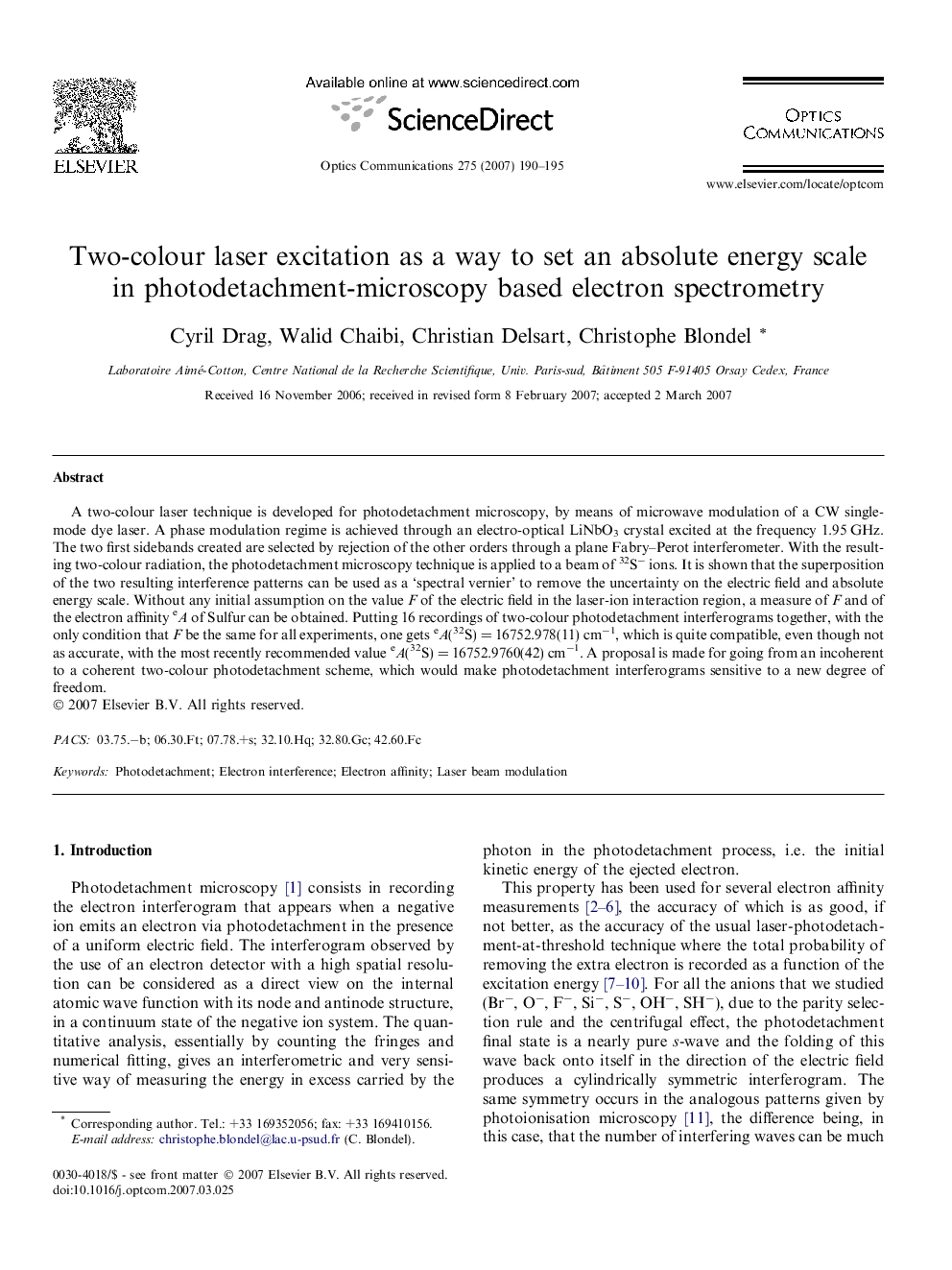| Article ID | Journal | Published Year | Pages | File Type |
|---|---|---|---|---|
| 1540654 | Optics Communications | 2007 | 6 Pages |
Abstract
A two-colour laser technique is developed for photodetachment microscopy, by means of microwave modulation of a CW single-mode dye laser. A phase modulation regime is achieved through an electro-optical LiNbO3 crystal excited at the frequency 1.95Â GHz. The two first sidebands created are selected by rejection of the other orders through a plane Fabry-Perot interferometer. With the resulting two-colour radiation, the photodetachment microscopy technique is applied to a beam of 32Sâ ions. It is shown that the superposition of the two resulting interference patterns can be used as a 'spectral vernier' to remove the uncertainty on the electric field and absolute energy scale. Without any initial assumption on the value F of the electric field in the laser-ion interaction region, a measure of F and of the electron affinity eA of Sulfur can be obtained. Putting 16 recordings of two-colour photodetachment interferograms together, with the only condition that F be the same for all experiments, one gets eA(32S)Â =Â 16752.978(11) cmâ1, which is quite compatible, even though not as accurate, with the most recently recommended value eA(32S)Â =Â 16752.9760(42) cmâ1. A proposal is made for going from an incoherent to a coherent two-colour photodetachment scheme, which would make photodetachment interferograms sensitive to a new degree of freedom.
Keywords
Related Topics
Physical Sciences and Engineering
Materials Science
Electronic, Optical and Magnetic Materials
Authors
Cyril Drag, Walid Chaibi, Christian Delsart, Christophe Blondel,
